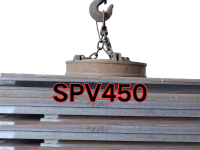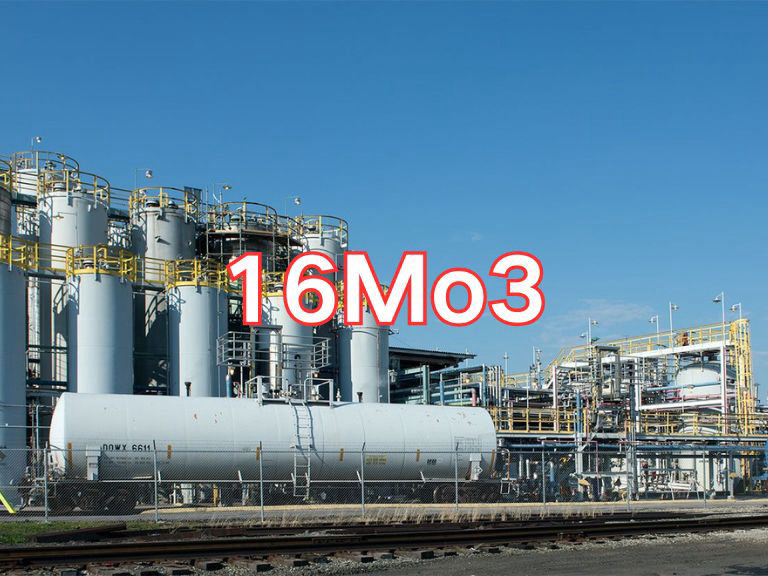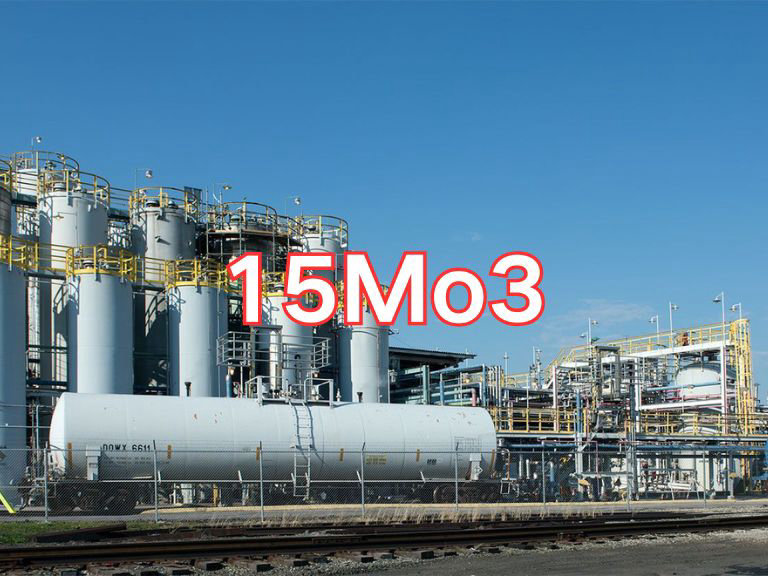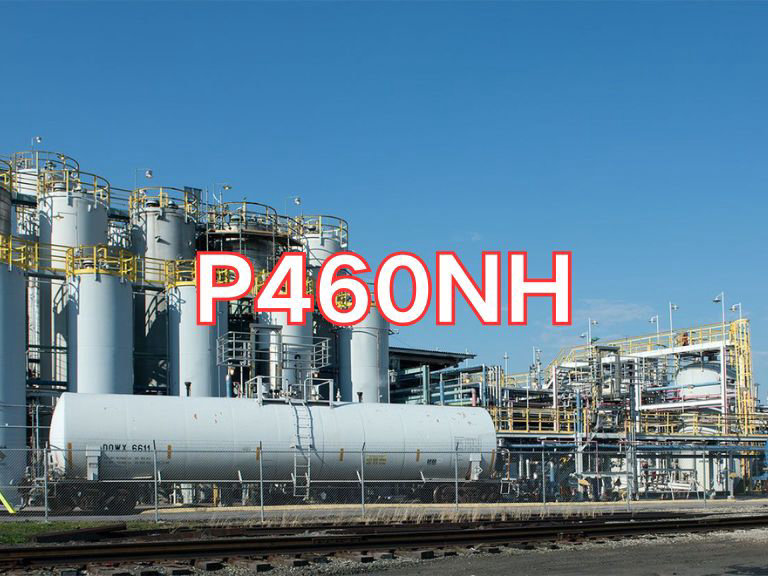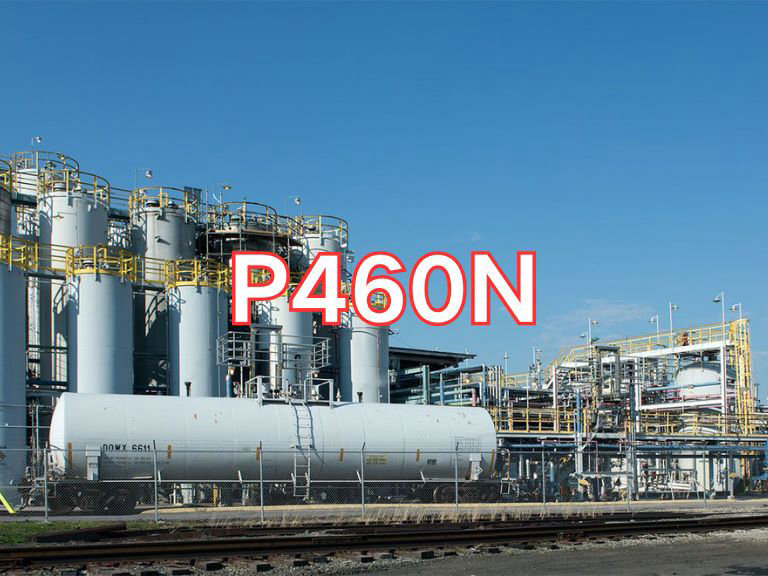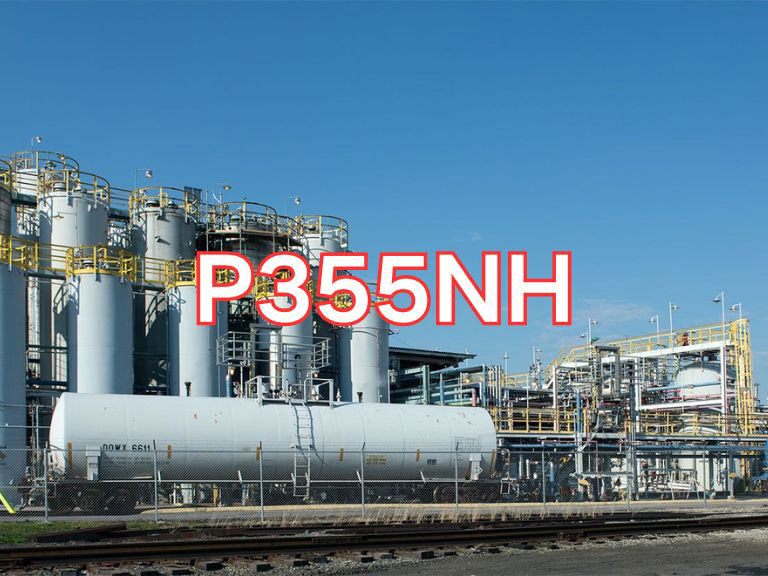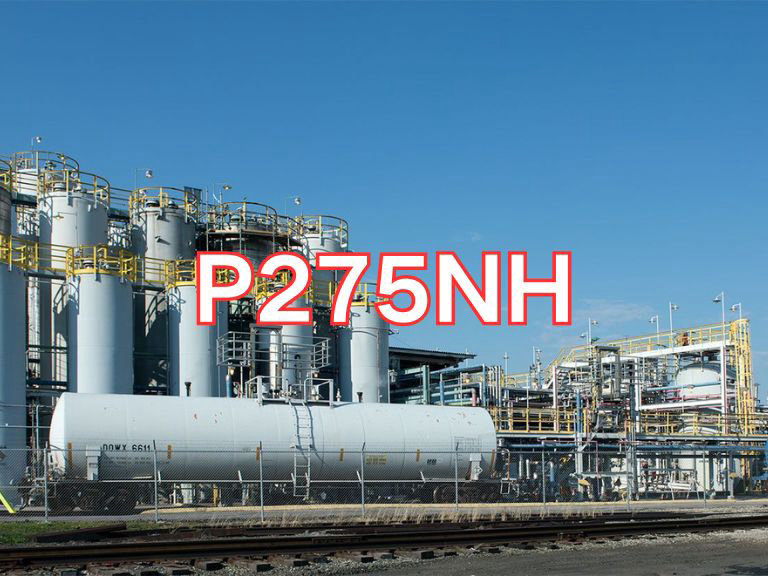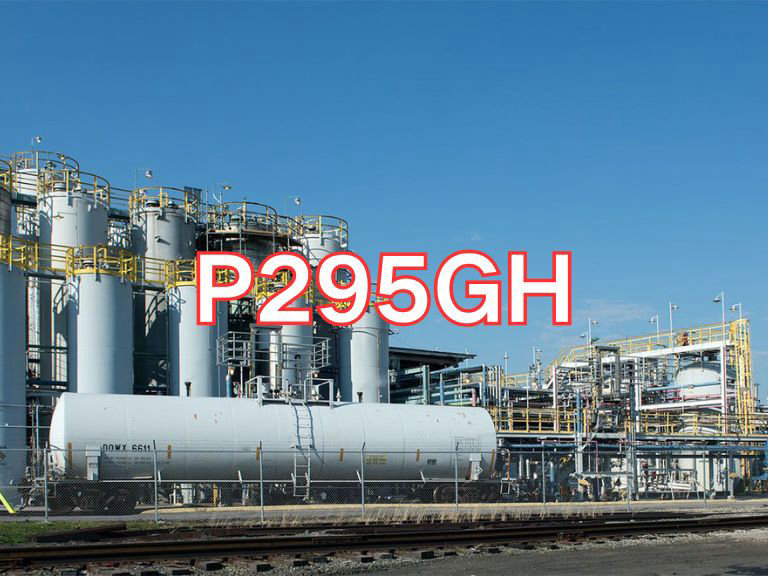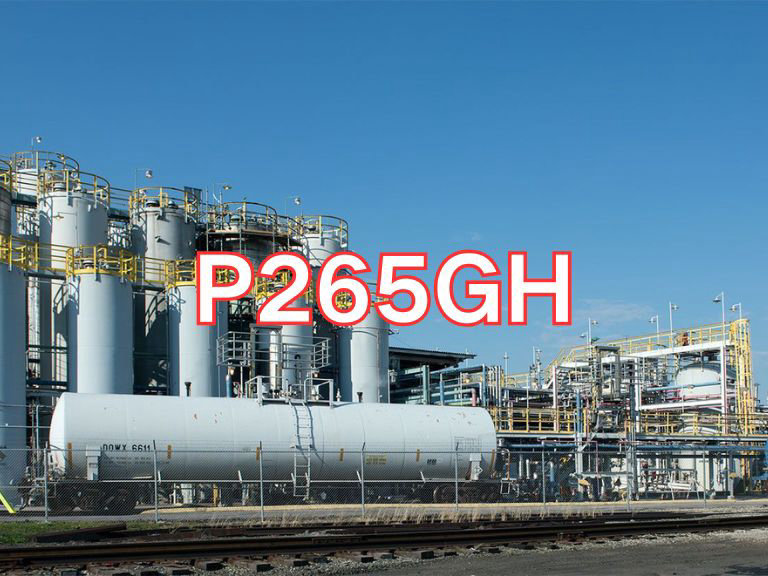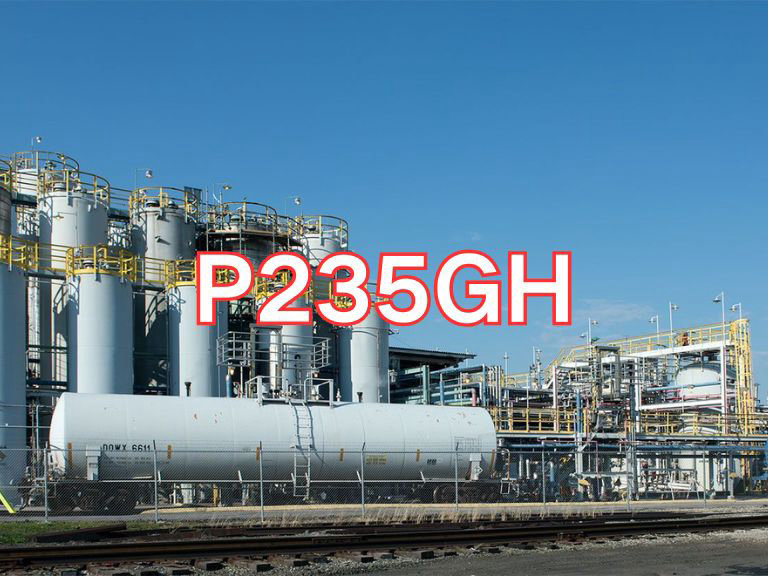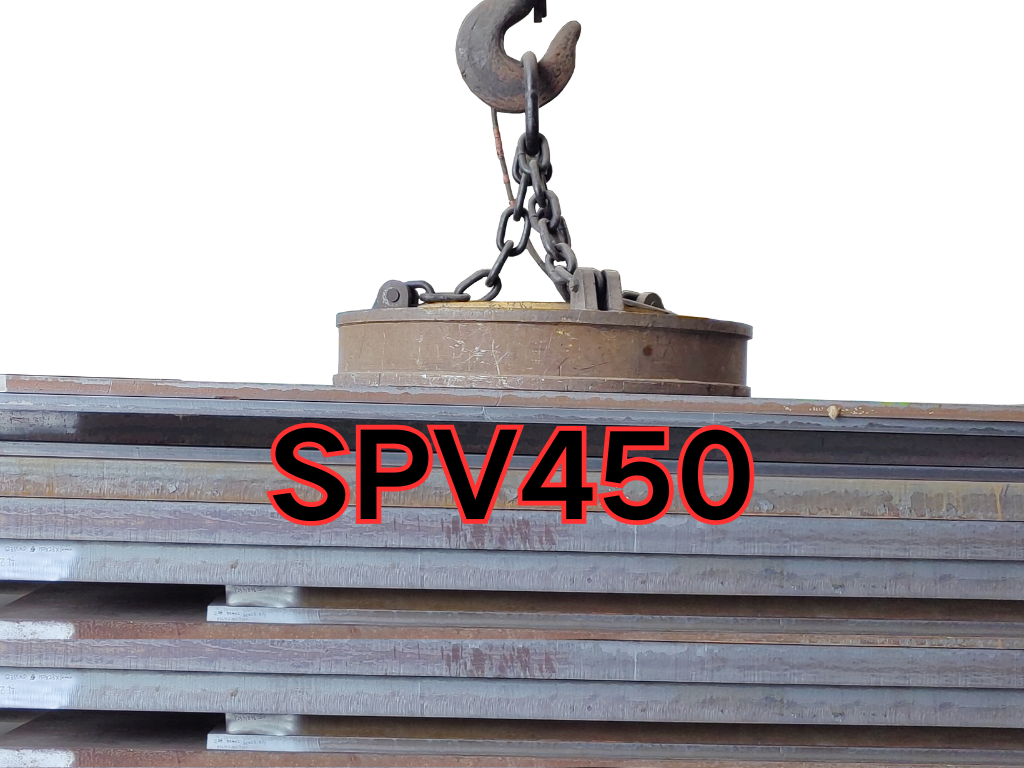

SPV450
1. Brief Introduction
SPV450 is a high-strength steel plate for pressure vessels specified in the Japanese Industrial Standard (JIS G 3115), belonging to the SPV series of steels. This grade offers a minimum tensile strength of 450 MPa level and acquires a fine-grained structure through normalizing treatment, combining good strength, toughness, and weldability. It is primarily used in the manufacture of medium-high pressure vessels such as petrochemical equipment, gas storage tanks, boilers, and auxiliary nuclear power plant equipment.
2. Grade Designation Explanation
SPV: Abbreviation for "Steel for Pressure Vessels"
450: Indicates the minimum tensile strength value of the steel, in MPa (i.e., 450 MPa)
3. Physical Properties
Typical physical properties of SPV450 at room temperature are as follows:
- Density: 7.85 g/cm³
- Elastic Modulus: 200-210 GPa
- Poisson's Ratio: 0.27-0.30
- Thermal Conductivity: 48.0 W/(m·K) (at 100°C)
- Coefficient of Thermal Expansion: 12.0×10⁻⁶/K (20-100°C)
- Specific Heat Capacity: 0.48 kJ/(kg·K)
4. Chemical Composition (Ladle Analysis, %)
The chemical composition requirements for SPV450 are as follows:
- C: ≤ 0.18
- Si: 0.15-0.55
- Mn: 1.00-1.60
- P: ≤0.025
- S: ≤0.025
- Others: micro-alloyed
Features: Utilizes a low-carbon design (C≤0.18%) with a carbon equivalent controlled at around 0.40%, ensuring excellent weldability; strength is enhanced through Mn-Si solid solution strengthening; strict control of P and S content (≤0.025%) ensures steel purity.
5. Application Fields
SPV450 is mainly used in the following areas:
- Petrochemical Industry: Hydrogenation reactors, synthesis towers, high-pressure separators
- Gas Storage and Transportation: Liquefied gas storage tanks (LPG), industrial gas storage tanks
- Energy Equipment: Power station boiler drums, nuclear power plant pressure vessels
- Heavy Machinery: Hydraulic press cylinders, large pressure vessels
- Marine Engineering: Pressure vessel equipment for offshore platforms
6. Testing and Production Methods
Production Method:
Basic oxygen or electric furnace smelting + secondary refining (LF+VD)
Controlled rolling + normalizing heat treatment (N condition)
Strict control of rolling temperature and pass reduction
Testing Requirements:
Mechanical property test: Tensile test (yield strength ≥285 MPa)
Impact test: Charpy V-notch impact test (impact energy ≥47 J at 0°C)
Bend test: 180° bend test (d=3a)
Non-destructive testing: Ultrasonic testing (JIS G 0801 Level 2 or above)
7. Corresponding/Similar Grades in International Standards
The correspondence between SPV450 and various international standards is as follows:
- Chinese Standard (GB): Q420R (GB 713)
- American Standard (ASTM): SA-516 Gr.70 (ASTM A516/A516M)
- European Standard (EN): P460NH (EN 10028-3)
- German Standard (DIN): 19Mn6 (DIN 17155)
- International Standard (ISO): P460NH (ISO 9328-2)
Note: Although these grades are similar in strength level, there may be differences in specific chemical composition, heat treatment requirements, and impact energy indicators. Actual selection and confirmation should be based on the requirements of the specific standard in use.

Ultrasonic Testing (UT)
A key non-destructive testing technique that uses high-frequency sound waves to detect internal flaws in steel plates. The probe emits sound waves, which reflect when encountering defects such as cracks or inclusions. The receiver captures the echoes, enabling precise determination of defect location and size. With high sensitivity, strong penetration, and fast inspection speed, UT effectively ensures internal quality, widely used in the production of heavy plates, pressure vessel plates, and other high-end products to guarantee safety and reliability.

Magnetic Particle Testing (MT)
A common surface inspection method that magnetizes the workpiece, causing leakage magnetic fields at surface or near-surface defects like cracks or inclusions, which attract magnetic particles to form visible indications. Simple to operate and highly sensitive, MT is suitable for rapid inspection of surface and near-surface flaws in ferromagnetic materials, widely used for online or offline inspection of plate edges, ends, and welds, ensuring product quality and safety.

Penetrant Testing (PT)
A non-destructive method for detecting surface-breaking flaws. A penetrant liquid is applied to the cleaned steel surface, allowing it to seep into defects such as cracks or pores. After removing excess penetrant, a developer is applied, causing the trapped penetrant to bleed out and form visible indications. Simple and cost-effective, PT is suitable for inspecting surface defects in various non-porous materials, commonly used for welds, castings, and complex components, effectively ensuring surface quality of steel plates.

